
This list of military awards and decorations of World War II is an index to articles on notable military awards presented by the combatants during World War II.

This list of military awards and decorations of World War II is an index to articles on notable military awards presented by the combatants during World War II.
In the Soviet Union orders and medals were also awarded to cities, factories, ships and military units.

Ludvík Svoboda was a Czech general and politician. He fought in both World Wars, for which he was regarded as a national hero, and he later served as the president of Czechoslovakia from 1968 to 1975.

General Michał Tadeusz Tokarzewski-Karaszewicz, Coat of arms of Trąby pseudonym Doktor, Stolarski, Torwid was a Polish general, founder of the resistance movement "Polish Victory Service".

The Africa Service Medal is a South African campaign medal for service during the Second World War, awarded to members of the Union Defence Forces, the South African Police and the South African Railways Police. The medal was originally intended for service in Africa, but it was later extended to cover service anywhere in the world.
Authorized foreign decorations of the United States military are those military decorations which have been approved for wear by members of the United States armed forces but whose awarding authority is the government of a country other than the United States.
The following is the Canadian order of precedence for decorations and medals in the Canadian Honours System. Where applicable, post-nominal letters are indicated.
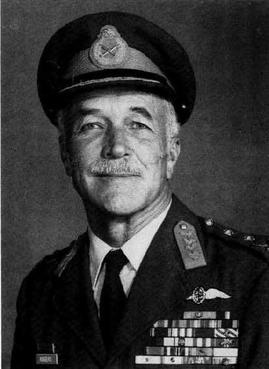
Robert Harry Doherty Rogers was a Chief of the South African Air Force. He joined the South African Air Force (SAAF) in 1940, and served in the Second World War and the Korean War. He subsequently rose through the ranks to become Chief of the SAAF. After his military career he entered politics and served as a Member of Parliament.

The War Order of Virtuti Militari is Poland's highest military decoration for heroism and courage in the face of the enemy at war. It was created in 1792 by Polish King Stanislaus II Augustus and is the oldest military decoration in the world still in use.

The orders, decorations and medals of Finland form a system through which the Finnish government shows its respect to persons who have distinguished themselves on some walk of life. The legal basis of the system is the Act on the displays of public recognition (1215/1999) which grants the president the authority to issue decrees on orders, medals and titles.
Kazimierz J. Kasperek, nicknamed Kazik, was a Polish Navy officer who served during World War II. He eventually emigrated to the United States, where he published his memoirs.
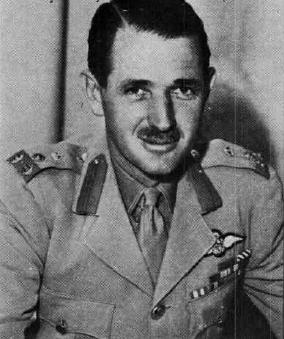
Major General James Thom Durrant was a highly successful South African pilot during World War II who eventually became the Director-General of the South African Air Force. In addition to commanding SAAF squadrons and wings, he also commanded RAF bomber groups. At the age of 32, he was the youngest Major-General in the Allied forces. He resigned from the SAAF as a result of the de-anglicisation policy instituted by Frans Erasmus of the National Party after they took power after the 1948 general election.
The Volunteer Cross for War and the Volunteer Medal for War were Polish military decorations introduced just before the start of World War II and later awarded by the Polish government in exile. The Cross and the Volunteer Medal for War were introduced by an act of the Sejm on 15 June 1939. It was to be awarded to people who volunteered for duty in the years 1918 to 1921 and helped to strengthen the independence of the Polish Republic. . Because of the German invasion of Poland in 1939 and the outbreak of World War II no decorations were awarded at the time. It was only after 1945 that the Polish government in exile was able to award the decorations. The communists authorities of the People's Republic of Poland refused to recognize the decoration. After the fall of communism a very similar decoration, Krzyż za udział w Wojnie 1918-1921, was introduced.
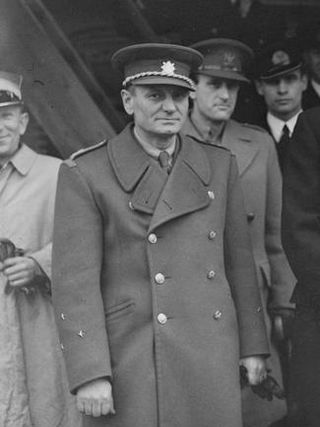
General of the Army Jan Sergěj Ingr was a Czechoslovak Army five star general and the Minister of National Defense in the Czechoslovak government-in-exile during the Protectorate of Bohemia and Moravia.

Mieczysław Cygan - Polish military commander, Brigadier General of the Polish Army, military governor of Gdańsk (1982–1988), Secretary General of the Council for the Protection of Struggle and Martyrdom Sites (1989–1990).
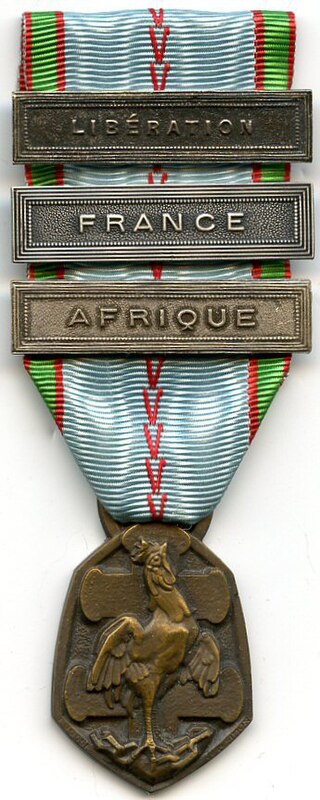
The 1939–1945 Commemorative war medal is a commemorative medal of France established on 21 May 1946 to recognize individual participation in the Second World War.
The Military Cross of Merit, Navy Cross of Merit, Air Force Cross of Merit are military decorations awarded to members of the Polish Armed Forces. The crosses with swords (z Mieczami) are conferred for meritorious service in combat operations against acts of terrorism at home or during military, peacekeeping or stabilization missions overseas; the crosses without swords are conferred for outstanding non-combat meritorious achievement or service.
The Greek honors system goes back to 1829 and the establishment of the Order of the Redeemer at the Fourth National Assembly at Argos. However, the relevant decree was signed in Nafplio by King Otto on May 20, 1833. The Grand Cross of the Order of the Redeemer remains the highest honor of Greece to this day.
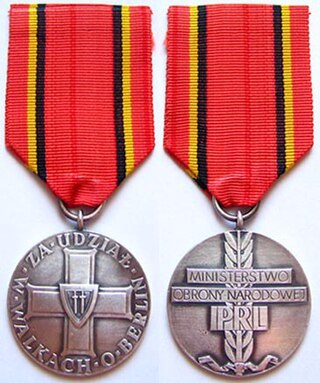
The Medal for Participation in the Battle of Berlin was a Polish commemorative medal awarded by the Polish People's Republic to commemorate Polish military personnel who took part in the Battle of Berlin.

Bolesław Kieniewicz was a Red Army Lieutenant general who served in the Polish People's Army during World War II and in post-war commanded the Internal Security Corps in the Polish People's Republic.

Emil Boček was a Czech World War II veteran and the last surviving Czechoslovak RAF pilot.